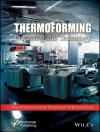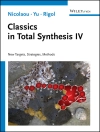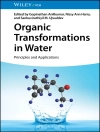Calcium Binding Proteins explains the unique and highly diverse functions of calcium in biology, which are realized by calcium binding proteins. The structures and physical characteristics of these calcium binding proteins are described, as well as their functions and general patterns of their evolution. Techniques that underlie the description of proteins are discussed, including NMR, circular dichroism, optical rotatory dispersion spectroscopy, calorimetry, and crystallography. The book discusses the patterns of bochmical phenomena such as calcium homeostasis, mineralization, and cell signaling that involve specific proteins. It summarizes ongoing research and presents general hypotheses that help to focus future research, and also provides a conceptual framework and a description of the underlying techniques that permits someone entering the field to become conversant.
Spis treści
Preface.
1. Historical Perspective.
2. Physiological Processes Involving Calcium Binding Proteins.
3. Comparison of the Ca¯2+ Ion with Other Metal Cations.
4. Complexes of Calcium and Other Cations with Low Molecular Weight.
5. Stoichiometry, Kinetics, and Thermodynamics of Calcium Binding.
6. Experimental Methods Used to Study Calcium Binding to Proteins.
7. Structure and Evolution of Proteins.
8. Protein Complexes with Metals Other than Calcium.
9. Nonessential Metals.
10. Parvalbumin.
11. EF-Hand Proteins.
12. Cytosolic Calcium Binding Proteins Lacking EF-Hands.
13. Extracellular Calcium Binding Proteins.
14. Interactions of Calcium Binding Proteins with Other Metal Ions.
15. Interactions of Calcium Binding Proteins with Other Proteinsand with Membranes.
16. Genetic Engineering of Calcium Binding Proteins.
References.
Index.
O autorze
Eugene A. Permyakov received his Ph D in physics and
mathematics at the Moscow Institute of Physics and Technology in
1976 and defended his Doctor of Science dissertation in biology at
Moscow State University in 1989. From 1970 to 1994, he worked at
the Institute of Theoretical and Experimental Bio-physics of the
Russian Academy of Sciences. Since 1994 he has been the Director of
the Institute for Biological Instrumentation of the Russian Academy
of Sciences. He is known for his work on metal binding proteins and
the intrinsic fluorescence method. His primary research focus is
the study of physico-chemical and functional properties of metal
binding (especially calcium-binding) proteins.
Robert H. Kretsinger received his Ph D in biophysics at
the Massachusetts Institute of Technology under the supervision of
Alex Rich in 1964. In 1967 he set up a protein crystallography lab
in the Department of Biology at the University of Virginia, where
he¿presently teaches, and determined the crystal structure of
parvalbumin as well as describing the EF-hand domain in 1971. He
has subsequently investigated the structures, functions, and
evolution of various EF-hand homologs, along with other protein
families. From 1978 to 1995, he directed a national facility to
build multiwire area detectors for x-ray diffraction and to collect
data from protein crystals.











